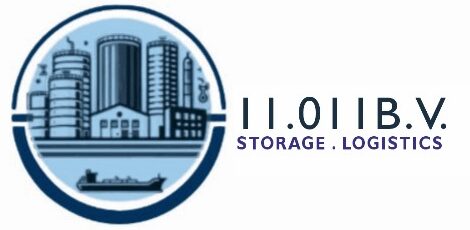Storage Terminals
- Home
- Business
- Storage Terminals
Accessibility :
Strategic Locations
Our terminal is strategically located to provide seamless access to major sea routes, highways, and pipeline networks, ensuring that every stage of transportation runs smoothly and efficiently. This prime positioning allows us to handle the movement of petroleum and chemical products with precision, reducing transit times and optimizing logistics for our clients.
With direct access to international shipping routes, our facility serves as a vital gateway for global trade. It enables the quick and reliable import and export of crude oil, refined fuels, and other bulk liquids to and from key markets around the world. The combination of advanced infrastructure, deep-water berths, and efficient loading systems allows vessels of various sizes to dock and operate with minimal turnaround time.
Whether products are moving by sea, road, or pipeline, our integrated logistics approach ensures consistent flow, safety, and reliability. This strategic connectivity not only strengthens our operational efficiency but also provides our clients with a dependable and cost-effective solution for global energy transport.
Our Terminal Storage Infrastructure
At 11.011 B.V., we deliver secure, reliable, and fully compliant storage solutions for crude oil and refined petroleum products. Trusted by leading energy companies, our terminal combines modern infrastructure with 24/7 monitoring to ensure safety, efficiency, and product integrity at every stage.
Our facilities handle a wide range of energy products, from temperature-controlled crude oil tanks to dedicated storage for gasoline, diesel, and jet fuel. We maintain strict quality control to preserve purity and consistency, while our seamless connections to major transport routes ensure smooth loading, unloading, and distribution with minimal downtime.
Built to exceed global standards, our tank farms feature double-walled containment systems, high-performance pumps, automated monitoring, and advanced leak detection. Environmental protection is a top priority, supported by vapor recovery units, stormwater management, and spill containment systems that go beyond regulatory requirements.
We operate under full EPA, OSHA, and DOT compliance, supported by 24/7 surveillance, access control, and real-time operational monitoring. With over eight years of experience serving major oil companies, refiners, and traders, we offer flexible short- and long-term storage agreements.
At 11.011 B.V., we combine capacity, technology, and expertise to provide dependable, sustainable storage solutions built for the future of the energy industry.
Storage Terminals
Our locations help us integrate into our customers’ supply chains, crucial to Europe and its regions.
Rotterdam Port (Netherlands)
The Port of Rotterdam stands as Europe’s premier energy logistics hub. Home to extensive oil storage facilities and deep-water access, it serves as a critical node in global energy trade. The terminal’s strategic location and infrastructure support seamless integration with global shipping routes and inland distribution networks.
Storage Capacity
23.8 million cubic meters
Connected Pipelines
1,500 km regional Network
Annual Throughput
98M t crude /200M t liquid bulk
Tank Capacities Range
250 m³ – 6,240 m³
Houston Port (USA)
Situated along the Houston Ship Channel, this terminal is a cornerstone of North America’s crude oil logistics, offering extensive storage and connectivity. The terminal’s deep-water access and extensive pipeline network enable efficient handling of crude oil and refined products, supporting both domestic and international markets.
Storage Capacity
2.89 million cubic meters
Connected Pipelines
105 to 805KM inbound/outbound
Annual Throughput
2 million barrels/day
Tank Capacities Range
1.5 m³ to 63,594 m³
Fujairah Port (UAE)
Located outside the Strait of Hormuz, the Port of Fujairah is a pivotal energy hub, offering strategic advantages for oil storage and transit. The terminal’s deep-water access and proximity to major shipping lanes enhance its role in global oil trade. Recent infrastructure developments aim to further bolster its capabilities.
Storage Capacity
1.05 million cubic meters
Connected Pipelines
360 km, 1.5 M bbl/day
Annual Throughput
120 million tonnes at port-level
Tank Capacities Range
500 m³ – 30,000 m³
Jurong Port (Singapore)
Situated within Singapore’s Jurong Island energy cluster, this terminal plays a vital role in the region’s refined product distribution. The terminal’s advanced safety systems and deep-water berths support efficient handling of clean petroleum products, facilitating trade across the Asia-Pacific region.
Storage Capacity
580,000 cubic meters
Connected Pipelines
3+ inbound/outbound
Annual Throughput
7 million tonnes/year
Tank Capacities Range
5,500 – 31,000 m³
Qingdao Port (China)
As a key component of China’s eastern seaport network, Qingdao Port serves as a critical gateway for crude oil imports and regional energy logistics. The terminal’s strategic location and infrastructure support efficient handling and distribution of crude oil, serving both domestic and international markets.
Storage Capacity
2.46 million cubic meters
Connected Pipelines
312 km total inbound/outbound
Annual Throughput
15.4 million tonnes/year
Tank Capacities Range
Approx 61,000 m³/tank
Ningbo-Zhoushan Port (China)
Ningbo-Zhoushan Port, located in Zhejiang Province, is a major hub for China’s oil logistics, playing a crucial role in the nation’s energy supply chain.
Storage Capacity
5.1 million cubic meters
Connected Pipelines
Extensive Network
Annual Throughput
137 million tonnes/year
Tank Capacities Range
350 – 40,000+ m³


